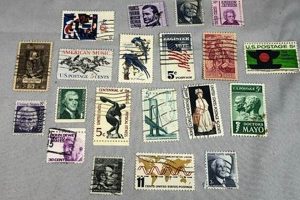Depictions of golfing from earlier eras, rendered through painting, illustration, photography, and sculpture, constitute a distinct artistic category. These works frequently showcase historical equipment, clothing styles, and landscapes associated with the sport’s development. Examples include early 20th-century posters advertising golf resorts, oil paintings of iconic golfers from the past, and black-and-white photographs documenting tournaments and courses during the formative years of the game.
The value of these artworks lies in their capacity to offer insights into the cultural and societal context surrounding golf’s evolution. They serve as historical records, documenting the sport’s changing aesthetics and its place within elite society. Furthermore, their appeal stems from a nostalgic appreciation for a bygone era, attracting collectors and enthusiasts who value the craftsmanship and historical significance embedded within these visual representations.
The following discussion will delve into specific types of these historical golfing images, their prominent artists, and their impact on the modern understanding and appreciation of the sport.
Collecting Insights for Historic Golfing Imagery
Acquiring historically significant golfing imagery requires careful consideration and informed decision-making. This section provides guidance for both novice and seasoned collectors.
Tip 1: Research Provenance Diligently: Investigate the artwork’s history of ownership to verify its authenticity and value. Documentation from reputable sources significantly enhances collectibility.
Tip 2: Assess Condition Rigorously: Examine the physical state of the piece meticulously. Factors such as fading, tears, or restorations directly impact its monetary and aesthetic worth.
Tip 3: Understand Artistic Style and Period: Familiarize oneself with the dominant artistic movements and periods represented in golfing imagery. Knowledge of styles such as Impressionism or Art Deco, as applied to golf subjects, is crucial.
Tip 4: Consider the Artist’s Reputation: The notoriety of the artist greatly influences the artwork’s market value. Works by established and recognized artists command higher prices.
Tip 5: Evaluate Subject Matter Significance: Prioritize pieces that depict historically important events, figures, or courses within the sport’s evolution. These hold greater cultural and historical weight.
Tip 6: Seek Expert Appraisal: Obtain professional valuations from qualified appraisers specializing in this specific area. Independent assessments offer unbiased insights into the item’s worth.
Tip 7: Preserve Properly: Implement appropriate storage and display methods to safeguard the artwork from environmental damage. Controlled humidity, UV protection, and archival framing are essential.
The aforementioned tips offer a foundation for building a discerning collection. Employing due diligence ensures responsible acquisition and long-term preservation.
The article will now proceed to examine the leading artists and their contributions to the realm of golfing depictions.
1. Historical Golfing Equipment
Visual representations frequently feature the tools and paraphernalia associated with the sport’s early years. This equipment, in turn, provides valuable context and aesthetic appeal to the artwork.
- The Gutta-Percha Ball
Prior to the introduction of the modern multi-layered ball, the gutta-percha ball was the standard. Created from the hardened sap of a Malaysian tree, its textured surface and off-white color are often depicted in 19th-century paintings and illustrations, becoming a symbolic marker of the era.
- Hickory-Shafted Clubs
Before the advent of steel and composite shafts, clubs were crafted from hickory wood. Their slender profiles, leather grips, and distinct clubhead shapes are readily identifiable in vintage artwork, reflecting a time of handcrafted precision.
- Mashies, Niblicks, and Spoons
These names, representing different types of irons and woods, denote clubs designed for specific distances and lies. Their presence in artwork signals the evolution of the sport’s strategy and the specialized tools employed by golfers.
- Caddie Attire and Bags
Early caddies, often depicted in tweed attire and carrying rudimentary bags, were integral figures on the course. Their portrayal offers insights into the social dynamics and working conditions of the time, as well as highlighting the evolution of golfing accessories.
Therefore, the presence and depiction of historical golfing equipment in vintage artwork elevates the pieces beyond mere aesthetic representation. It imbues the art with historical accuracy, serving as a visual record of the sport’s material culture and technological advancement.
2. Societal representation within golf
Golf artwork from earlier eras offers a lens through which to examine societal hierarchies, norms, and aspirations. These depictions reveal not only the aesthetic tastes of the time but also the social structures that governed participation in the sport.
- Exclusivity and Class Distinction
Images frequently portray golf as a pastime of the affluent, with scenes set at private clubs and featuring individuals adorned in sophisticated attire. This reinforces the historical reality of restricted access based on socioeconomic status. Examples include paintings of elegantly dressed golfers enjoying leisurely rounds and advertisements for exclusive golf resorts.
- Gender Roles and Representation
The limited presence of women in much of the artwork reflects prevailing gender norms. When women are depicted, it is often in supporting roles or engaged in ancillary activities rather than as central figures in the game. This underscores the historical imbalance in opportunities and recognition within the sport.
- Racial and Ethnic Exclusions
The underrepresentation or complete absence of individuals from minority ethnic backgrounds in many pieces underscores the historical segregation and discriminatory practices within the sport and wider society. This absence serves as a stark reminder of the systemic barriers faced by marginalized communities.
- Symbols of Leisure and Status
Artwork often incorporates symbols of wealth and leisure, such as luxurious clubhouses, private carriages, and meticulously manicured landscapes. These elements reinforce the association of golf with privilege and social standing, highlighting its role as a marker of status within elite circles.
In conclusion, the representations of social structures within these depictions are not merely incidental details. They are integral to understanding the historical context and cultural significance of both the sport and the artwork itself. These images function as social documents, offering insights into the dynamics of power, privilege, and exclusion that shaped golf’s early development.
3. Evolution of course design
The correlation between the evolution of course design and depictions of this within vintage golf imagery is significant. Early courses, often natural links lands with minimal alteration, are documented in artwork showcasing their rugged, unrefined characteristics. Illustrations from the late 19th and early 20th centuries emphasize the natural undulations, gorse bushes, and seaside locations common to these courses. These representations offer a stark contrast to later depictions of manicured parkland courses, reflecting a shift in design philosophy. This progression from natural to more artificial landscapes is a recurring theme, illustrating a key phase of the sport’s maturation.
Furthermore, course architecture itself becomes a subject of artistic interest. Images depicting notable design features, such as the “Road Hole” at St Andrews or distinctive bunker layouts, are valuable historical records. These artworks not only showcase the aesthetic qualities of the courses but also serve as visual documentation of now-modified or lost architectural elements. For instance, early photographs and paintings sometimes reveal original green contours or hazards that have since been altered, providing insights for golf historians and course restoration projects.
In summary, understanding the evolution of golf course design enhances the appreciation and interpretation of historic golf artwork. These pieces offer a window into the past, revealing how the sport’s playing fields have been shaped by changing technologies, philosophies, and aesthetic preferences. Identifying these design trends within the art allows for a deeper engagement with the sport’s rich and complex history.
4. Prominent golfer portraiture
Portraiture depicting celebrated golfers constitutes a significant segment within the realm. These artworks capture not only the likeness of individuals but also embody the spirit and legacy of the sport. The importance of these depictions stems from their capacity to immortalize iconic figures, contributing to the cultural narrative surrounding golf. For example, portraits of Old Tom Morris, Harry Vardon, and Bobby Jones serve as visual embodiments of their respective eras, reflecting prevailing artistic styles and societal values.
The relationship between prominent golfer portraiture and this art form is multifaceted. These portraits often function as historical documents, providing insights into the physical appearance, attire, and mannerisms of legendary golfers. They may also capture key moments in their careers, such as tournament victories or significant achievements. Moreover, the artistic style employed in these portraits ranging from realistic oil paintings to stylized caricatures reveals the evolving aesthetic sensibilities of the time. The practical significance of understanding this connection lies in its ability to enhance appreciation and interpretation of both the artworks and the history of the sport.
In summary, prominent golfer portraiture is an integral component. It provides historical context, aesthetic value, and cultural significance. Recognizing the interplay between these portraits and the broader field enriches the viewing experience and fosters a deeper understanding of golf’s rich heritage.
5. Early advertising illustrations
Illustrations promoting golf-related products, resorts, and events constitute a noteworthy category within the broader scope of golfing imagery from the past. These advertisements offer insights into the marketing strategies, consumer culture, and aesthetic preferences of their respective eras, thereby enriching understanding of the sport’s historical context.
- Promotion of Golf Resorts
Posters and brochures advertising golf resorts frequently depicted idyllic landscapes, luxurious accommodations, and the promise of leisurely recreation. These illustrations, often employing vibrant colors and elegant typography, were designed to attract affluent clientele seeking exclusive vacation experiences. Examples include artwork promoting resorts in Scotland, Florida, and other popular destinations, showcasing meticulously manicured courses and sophisticated social activities. These promotions contributed to the association of golf with wealth and leisure.
- Endorsements of Golf Equipment
Advertisements featuring endorsements of clubs, balls, and other equipment played a crucial role in shaping consumer preferences. These illustrations often depicted professional golfers using specific brands, thereby lending credibility and prestige to the advertised products. Examples range from vintage magazine ads showcasing the latest hickory-shafted clubs to posters promoting innovative ball designs. These endorsements highlight the evolving technology and marketing tactics within the golf industry.
- Tournament Promotion
Illustrations advertising golf tournaments served to generate excitement and attract spectators to these events. These advertisements typically featured dynamic action scenes, portraits of prominent golfers, and information about dates, venues, and prizes. Examples include posters promoting early Open Championships and Ryder Cup matches, capturing the competitive spirit and social significance of these tournaments. The visual style and typography used in these advertisements reflect the evolving aesthetics of graphic design.
- Visual Representation of Golfing Fashion
Early advertising artwork often showcased the attire and accessories associated with golf, reflecting the evolving fashion trends of the time. Illustrations depicted golfers wearing tweed suits, knickerbockers, and other sartorial choices, thereby influencing consumer preferences and shaping the visual culture of the sport. Examples include advertisements for clothing brands and accessories, highlighting the social importance of dressing appropriately for the golf course. These depictions provide insights into the historical evolution of golfing fashion.
These advertising images extend beyond mere commercial promotions; they also function as historical documents, providing valuable insights into the social, cultural, and economic forces that shaped the sport. Their study enhances the understanding of its evolution and enduring appeal.
Frequently Asked Questions Regarding Golf Vintage Art
The following questions and answers address common inquiries and misconceptions related to the acquisition, valuation, and preservation of golfing artwork from historical periods. It aims to provide clarity and guidance to collectors and enthusiasts.
Question 1: What defines a piece as “golf vintage art?”
The designation generally applies to artwork created prior to the mid-20th century that depicts golf-related subjects, including players, courses, equipment, and social scenes. The medium can vary, encompassing paintings, prints, photographs, and sculptures.
Question 2: How is the authenticity of golfing artwork from the past verified?
Authenticity verification involves a multi-faceted approach. This may include examining the signature and provenance of the artwork, assessing the materials and techniques used against known historical practices, and consulting with recognized experts in the field.
Question 3: What factors influence the monetary value of vintage golfing images?
Valuation is determined by a combination of factors. These include the artist’s reputation, the subject matter’s historical significance, the artwork’s condition, its provenance, its rarity, and current market demand.
Question 4: What are the essential considerations for preserving historically relevant golfing artwork?
Preservation requires careful attention to environmental control, handling practices, and display methods. Measures to mitigate light exposure, temperature fluctuations, humidity, and physical damage are essential.
Question 5: Are reproductions of golf artwork considered valuable?
While reproductions may possess decorative appeal, their monetary value is typically significantly lower than that of original artworks. The historical and artistic significance is diminished in the absence of original creation and provenance.
Question 6: Where can one find reputable sources for acquiring vintage artwork of golf?
Reputable sources include established art galleries, auction houses specializing in historical memorabilia, and dealers with expertise in vintage sporting art. Due diligence and careful research are imperative when considering a purchase.
The above addresses fundamental questions related to this subject. Due diligence is paramount for any potential collector.
The discussion will now pivot to exploring contemporary interpretations and artistic expressions related to the sport of golf.
Golf Vintage Art
This exploration has examined depictions of golfing from earlier periods, emphasizing their historical, societal, and artistic significance. From showcasing the evolution of equipment and course design to revealing societal norms and immortalizing prominent figures, these works serve as invaluable records of the sport’s development. Furthermore, the analysis of early advertising illustrations highlighted the marketing strategies and consumer culture associated with golf’s growth.
As a visual representation of golf’s rich heritage, these images offer a continuing source of insight. Continued study and preservation of these artworks are essential for maintaining a comprehensive understanding of the sport’s past and for informing its future trajectory.







